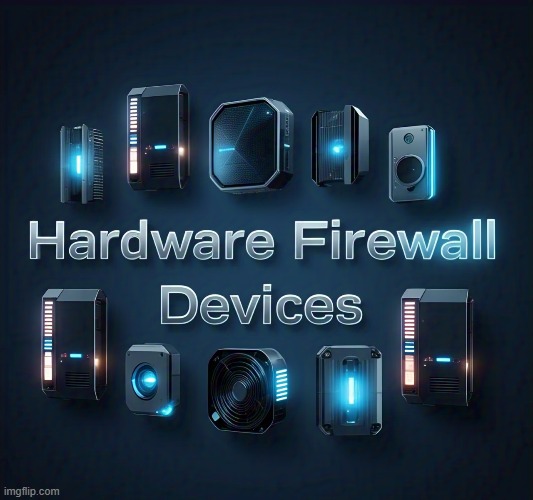In 2025, cybersecurity remains a top priority for businesses, organizations, and even home users. With the growing sophistication of cyber threats, investing in a robust hardware firewall is crucial to securing networks and sensitive data. Hardware firewalls provide dedicated, enterprise-level protection against cyberattacks, filtering traffic at the network perimeter before threats reach connected devices. In this guide, we’ll explore the best hardware firewall devices for 2025, their features, and ideal use cases.
Unlike software firewalls that operate on individual devices, hardware firewalls offer centralized protection for entire networks. They provide:
Superior Performance: Offloads security processing from individual devices.
Advanced Security Features: Includes deep packet inspection (DPI), intrusion prevention systems (IPS), and VPN capabilities.
Scalability: Suitable for small businesses to large enterprises.
Network-Wide Protection: Defends all connected devices, including IoT.
Now, let’s explore the top hardware firewalls for 2025.
1. Cisco Firepower 1010

Overview:
Cisco remains a leader in network security, and the Firepower 1010 is an ideal choice for small to medium-sized businesses (SMBs). It offers a balance between security, performance, and ease of use.
Key Features:
Threat intelligence integration with Cisco Talos.
Next-generation firewall (NGFW) capabilities.
Advanced malware protection (AMP).
Support for up to 650 Mbps throughput.
Integrated VPN functionality.
Best For:
SMBs needing enterprise-grade security.
Businesses requiring remote access capabilities.
2. Fortinet FortiGate 100F
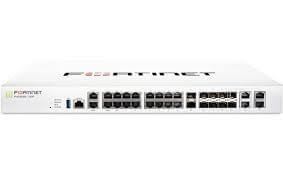
Overview:
Fortinet’s FortiGate 100F is one of the best mid-range firewall options for 2025, offering high performance and AI-powered threat detection.
Key Features:
1 Gbps firewall throughput.
Integrated AI-driven security for real-time threat mitigation.
Intrusion Prevention System (IPS) and Application Control.
Cloud-based management and logging.
SD-WAN optimization for improved network performance.
Best For:
Enterprises needing a high-speed firewall.
Organizations with multiple branch locations.
3. Palo Alto Networks PA-400 Series
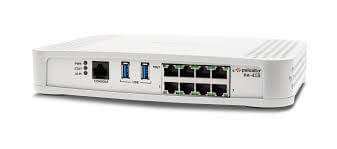
Overview:
Palo Alto Networks is known for its deep security insights and machine learning-driven firewall capabilities. The PA-400 series is tailored for growing businesses.
Key Features:
Machine learning-powered threat detection.
Advanced URL filtering for content security.
Cloud-native security features.
High-speed SSL decryption.
Built-in zero-trust segmentation.
Best For:
Businesses requiring automated threat intelligence.
Organizations needing cloud-integrated security.
4. SonicWall TZ570

Overview:
SonicWall’s TZ570 is an excellent firewall for SMBs that require high-speed performance with easy deployment.
Key Features:
Up to 2.5 Gbps firewall throughput.
Deep packet inspection for enhanced security.
Multi-gigabit ports for improved connectivity.
Integrated SD-WAN for optimized network management.
Advanced threat protection with real-time cloud sandboxing.
Best For:
SMBs looking for cost-effective security.
Networks requiring seamless integration with existing infrastructure.
5. Ubiquiti Dream Machine Pro (UDM-Pro)

Overview:
The Ubiquiti Dream Machine Pro is a cost-effective yet powerful firewall solution, ideal for small businesses and advanced home users.
Key Features:
All-in-one networking solution with routing, firewall, and VPN capabilities.
Cloud-based monitoring and control via Unifi Controller.
Intrusion detection and prevention system (IDPS).
10 Gbps networking capabilities.
Easy setup and management.
Best For:
Small businesses and tech-savvy home users.
Users looking for an affordable yet powerful firewall solution.
Choosing the Right Hardware Firewall for 2025
When selecting a hardware firewall, consider:
Network size: Ensure the firewall supports the number of devices in your network.
Performance needs: Look at throughput, VPN capabilities, and processing power.
Security features: IPS, DPI, malware protection, and cloud integration.
Ease of management: Some firewalls offer cloud-based control for remote management.
Conclusion
As cyber threats evolve, having a reliable hardware firewall is essential for securing your network. The options listed above represent the best firewall devices of 2025, catering to businesses of all sizes and security needs. Whether you require an enterprise-grade solution or a cost-effective firewall for a small network, investing in the right hardware firewall ensures enhanced security, scalability, and peace of mind.
References
Why Businesses Trust SecureMyOrg For Comprehensive Network Security
At SecureMyOrg, we uncover and fix all possible security vulnerabilities of mobile and web, while providing solutions to mitigate risks. We are trusted by renowned companies like Yahoo, Gojek and Rippling, and with 100% client satisfaction, you’re in safe hands!







Some of the things people reach out to us for –
- Building their cybersecurity program from scratch – setting up cloud security using cost-effective tools, SIEM for alert monitoring, building policies for the company
- Vulnerability Assessment and Penetration Testing ( VAPT ) – We have certified professionals, with certifications like OSCP, CREST – CPSA & CRT, CKA and CKS
- DevSecOps consulting
- Red Teaming activity
- Regular security audits, before product release
- Full time security engineers.
Relevant Posts

AI-Powered Phishing Emails: 7 Ways to Spot and Stop Them Before They Strike
Penetration testing as a service (PTaaS) lets experts simulate real attacks to uncover vulnerabilities before hackers do. This guide explains the process, benefits, and costs, helping businesses strengthen defenses with predictable, ongoing security checks.

Why Regular Penetration Testing is Essential for Modern Companies
Penetration testing as a service (PTaaS) lets experts simulate real attacks to uncover vulnerabilities before hackers do. This guide explains the process, benefits, and costs, helping businesses strengthen defenses with predictable, ongoing security checks.
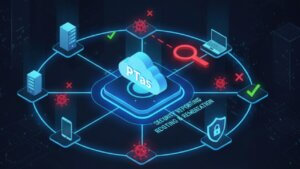
What Is Penetration Testing as a Service?
Penetration testing as a service (PTaaS) lets experts simulate real attacks to uncover vulnerabilities before hackers do. This guide explains the process, benefits, and costs, helping businesses strengthen defenses with predictable, ongoing security checks.

How To Inspect Encrypted Traffic Without Breaking Privacy
Network administrators face a challenge: securing systems while respecting privacy. This guide explains how to inspect encrypted traffic without breaking privacy using metadata, anomaly detection, and machine learning ensuring visibility, compliance, and trust.

How to Audit Infrastructure as Code (IaC) for Security Vulnerabilities
Discover how to audit Infrastructure as Code (IaC) for security vulnerabilities with this practical guide. Learn to scan IaC files using tools like Checkov, fix issues like exposed resources, and integrate audits into CI/CD pipelines. Protect your cloud systems from misconfigurations and ensure compliance with clear, actionable steps.
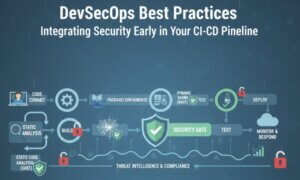
DevSecOps Best Practices: Integrating Security Early in Your CI/CD Pipeline
This article provides a practical guide to embedding security into every stage of your CI/CD pipeline. Learn core DevSecOps best practices like SAST, DAST, dependency scanning, secrets management, and compliance automation to catch vulnerabilities early, foster a culture of shared ownership, and build a secure-by-design development process that accelerates release cycles.
